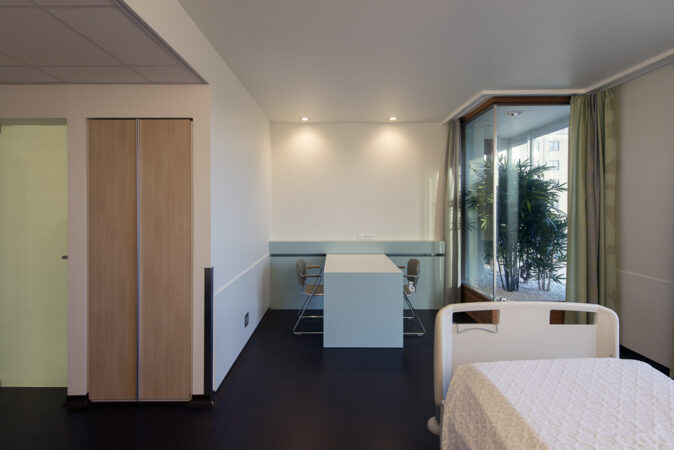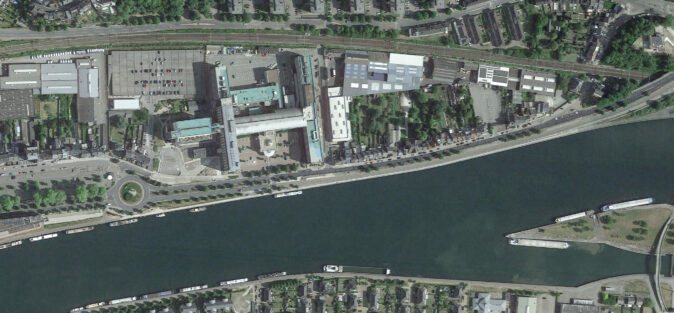innovative, elegant & efficient simplicity
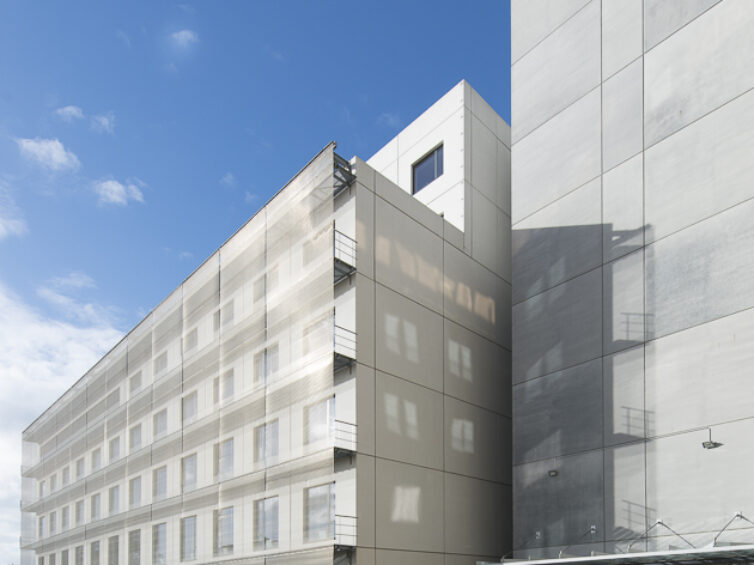
innovative, elegant & efficient simplicity

Development of a general master plan (by assar architects) for the following functions: medicine, surgery, paediatrics, maternity, geriatrics, and neonatal care. Incorporation of the province’s maternity ward, a day hospital, functional links, a new reception area, and a new “health space” extension.
Since 1961, when the first three wings of the former Saint Camille Hospital were built, the hospital has developed in successive phases. Following a decision to merge the hospitals, assar architects (formerly Hoet & Minne) has drawn up several master plans since 1993.
The first phase of the works consisted of the transformation of ± 8,500 m² of offices into hospital services: maternity, obstetric block, neonatal, paediatrics, geriatrics, intensive care, and dialysis, etc…
In the second phase, the construction of a second skin to ensure functional links between the different blocks of the hospital and a new reception, administration, and conference building, constituted the hospital’s ‘visiting card’, thereby reunifying the aesthetics of all the buildings from the different periods. The research on this aspect was particularly thorough in order to offer contextuality and contemporaneity. Stability studies enabled the resolution of a number of problems linked to the implantation and shape of this functional link (length 100 m, width 4 m) adjoining four existing buildings and with its basements in the bed of the Meuse.
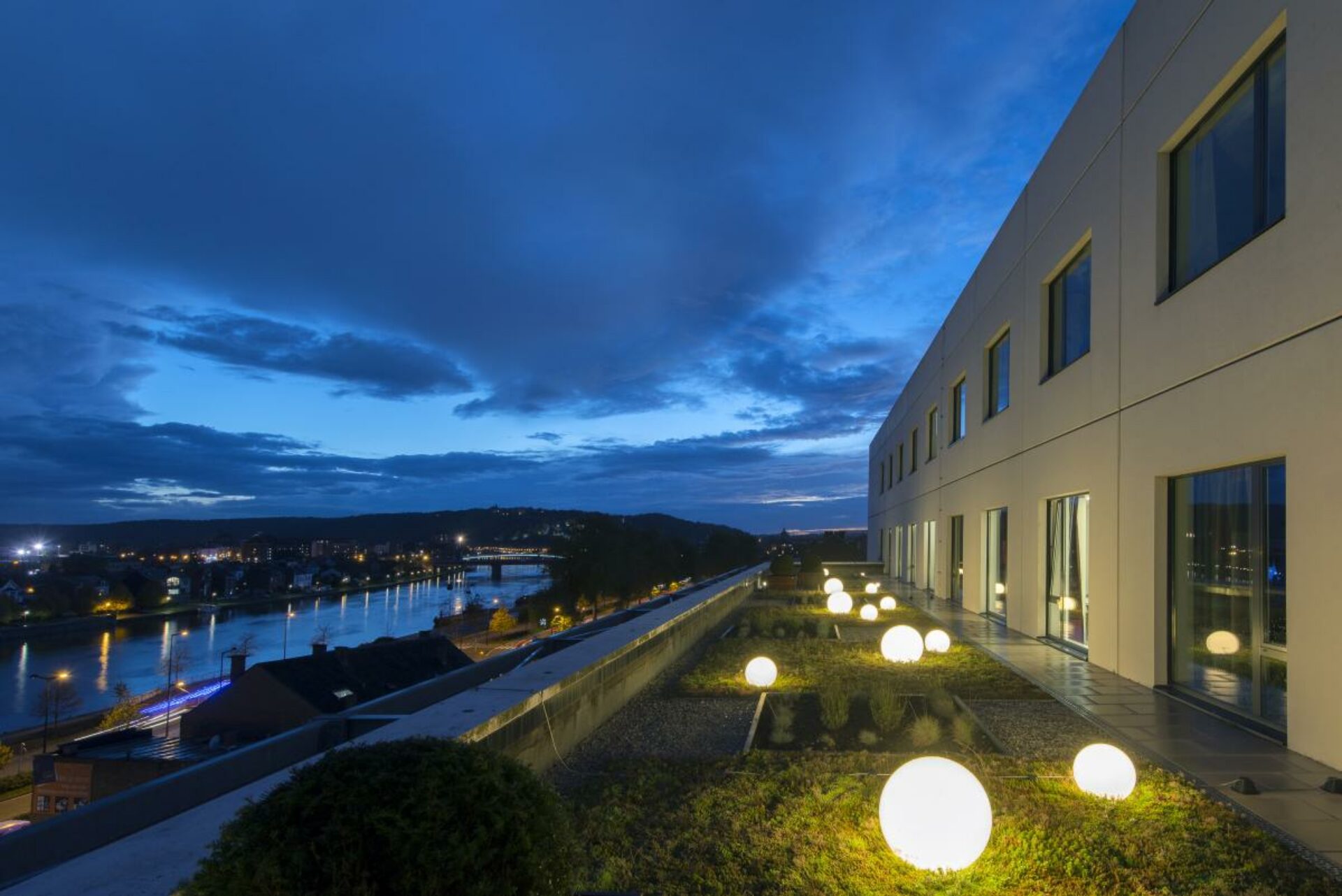
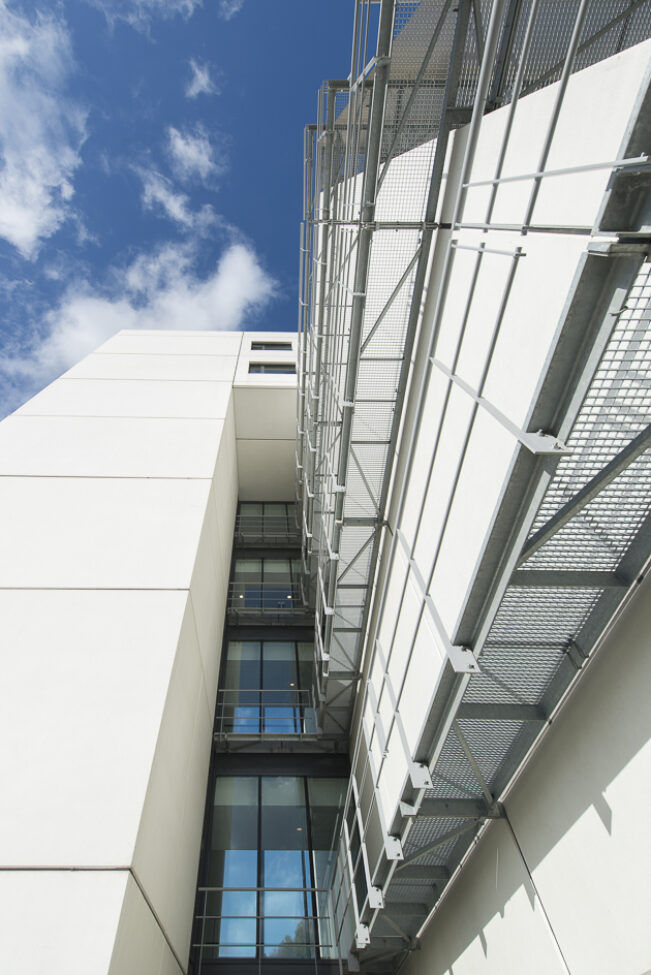
| program | 420 bed general hospital: construction of a new “health space” extension, & extension of outpatient hospitals |
| client | Centre Hospitalier Régional Sambre & Meuse |
| address | avenue Albert 1er, 185 • 5000 Namur |
| building type | care |
| status | completed |
| expertises | architectureinterior architecturelandscape designproject managementconstruction managementfeasibility studiesprogrammingbuilding audit |
| offices | brussels |
| size | 11.640 m² for the health space 1.900 • for the extension of the outpatient hospitals |
| team | client: A.P.P. Solidarité et Santé - C.H.R. de Namur architect: assar stability engineering office: Ellyps special technologies design office: Ellyps coordination office: Seca Benelux |

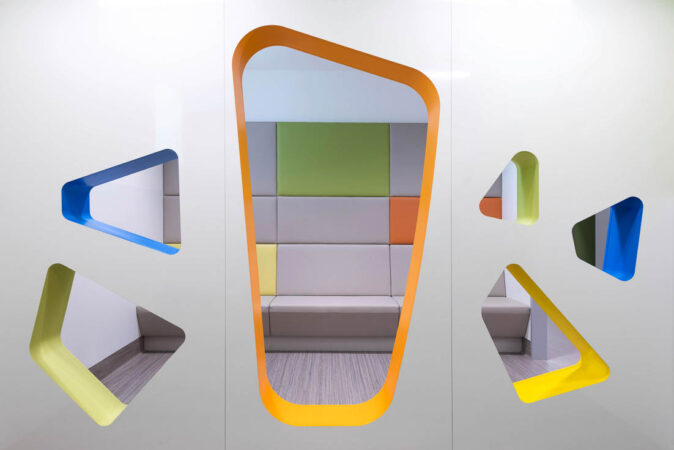
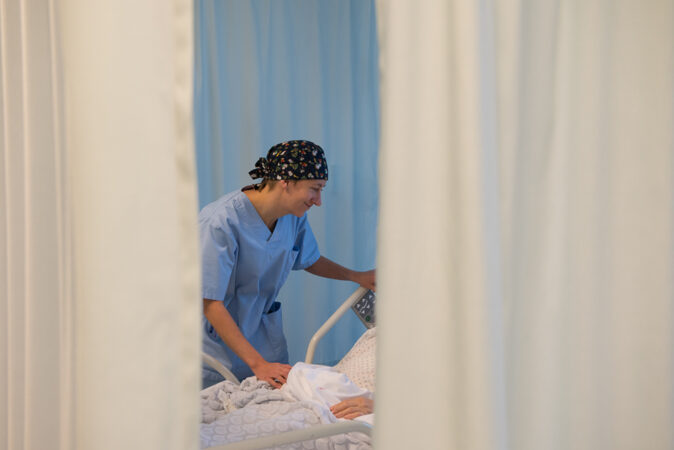
The “Health Space” is the third and final expansion phase initiated by the master plan developed by our office several years ago. With this extension, the CHR can envisage a new stage in its evolution – the refurbishment of the existing wings.
The building is constructed as an extension on the western side of the hospital site & has eight floors with a total surface area of 11.640 m².
This new wing accommodates the following activities:
Despite the diversity of the programme and the addition of specific services from one floor to another, the health space conveys a contemporary image and an apparent simplicity.
The building has been designed to present a general harmony and aesthetic coherence while preserving the greatest possible flexibility of use. The floors are thus freed from all structural and technical constraints. This simplicity obviously does not exclude innovations and the integration of state-of-the-art technologies.
For this project, concepts such as prefabrication, modularity, rationalisation, flexibility, and adaptability were used in the design and construction of the new building, amongst others, to help control costs and the quality of implementation. This also resulted in a building with a clear and elegant volumetric configuration.
The views over the Meuse and the Meuse landscape, which are visible from the higher elevations, were given priority. Given the southern orientation of the main facade, a metal structure was installed to create a solar protection while preserving the views to the outside.
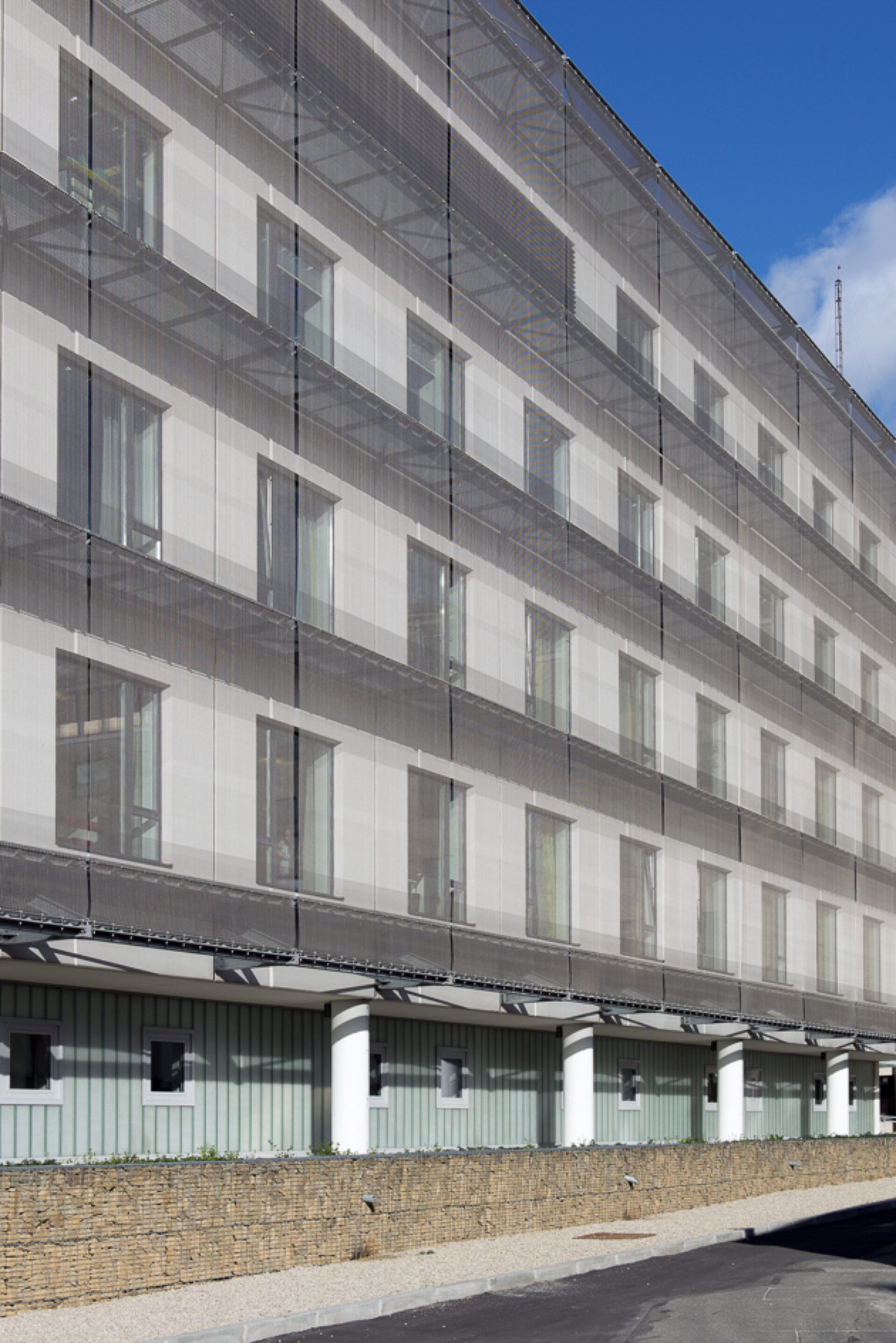
Regarding technical aspects and energy performance, the building is covered with an enhanced thermal insulation and has a high level of inertia and air tightness. The installations are equipped with heat recovery systems and centralised technical management. Rainwater is filtered and recovered, and natural light is used in the management of lighting.
Following occupation of the Health Space since 2014, the former operating theatre block has been rebuilt and refurbished into a brand-new outpatient surgery unit for adults, children, and ophthalmics, which opened in 2018.
At the same time, the capacity of the adult surgical day hospital has been expanded and completed by a paediatric day hospital.
The dialysis department is located on the 5th floor of the new wing, called “Espace Santé” [“Health Space”]. In this building, the operating theatre is the department that determined the surface area of the floor spaces, in addition to the limitations of the site. It is also the department whose location on the 3rd floor was a requirement, in order to be linked with the former operating theatre block and sterilisation. The lower levels of the building, from the basement up to and including the 4th floor, therefore have a surface area of 1,200 m².
The dialysis programme, however, required less space. We therefore took advantage of this by removing a bay along the length of the building, thus providing a surface area of around 800 m² for the upper two levels, but also, and above all, providing a green roof terrace, inaccessible to the public, with a view of the Meuse.
Large bay windows make the many visits by patients to this department a little more pleasant.
The dialysis programme is very extensive and includes three types of care:
Each unit is separate and clearly identified so that it can work in different time slots. In addition, upon entering the department, we have a reception/secretarial area, three nephrology consultation rooms, and a nurse’s area.
The clean storage room and pharmacy are located in the centre of the department but are easily accessible for supplies. It is in direct contact with the haemodialysis and double-sided modular cupboards facilitate the transfer of the required consumables.
The technical rooms for water treatment (reverse osmosis), storage, and centralisation of concentrates are located on the lower floor, on the same level as the operating theatre block technical floor. Adjacent to this, there is also a facility for the maintenance of dialysates.
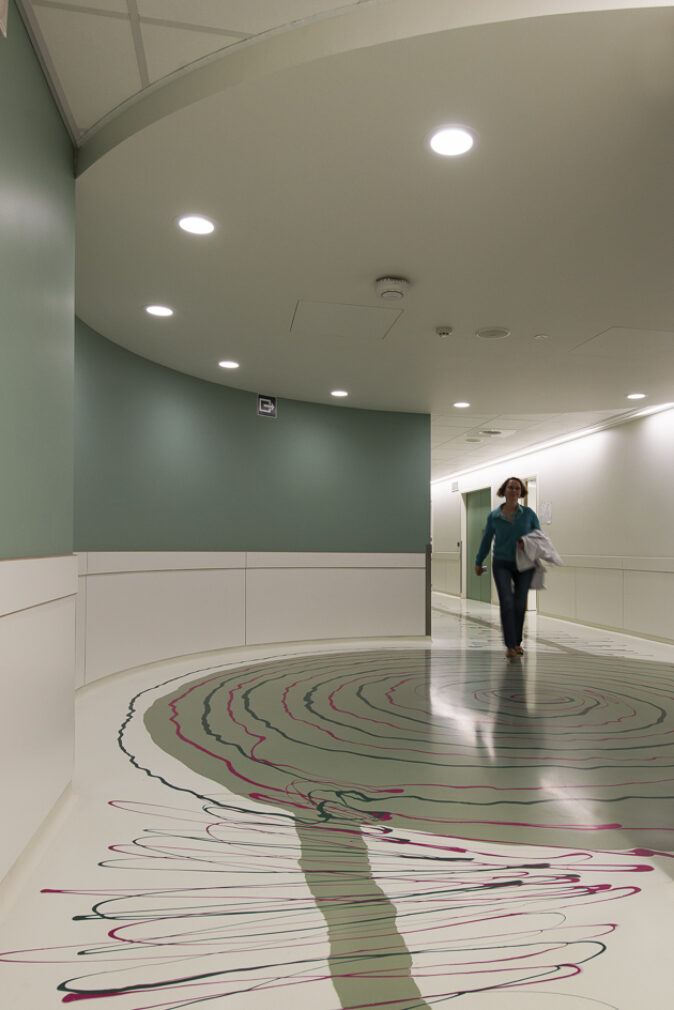
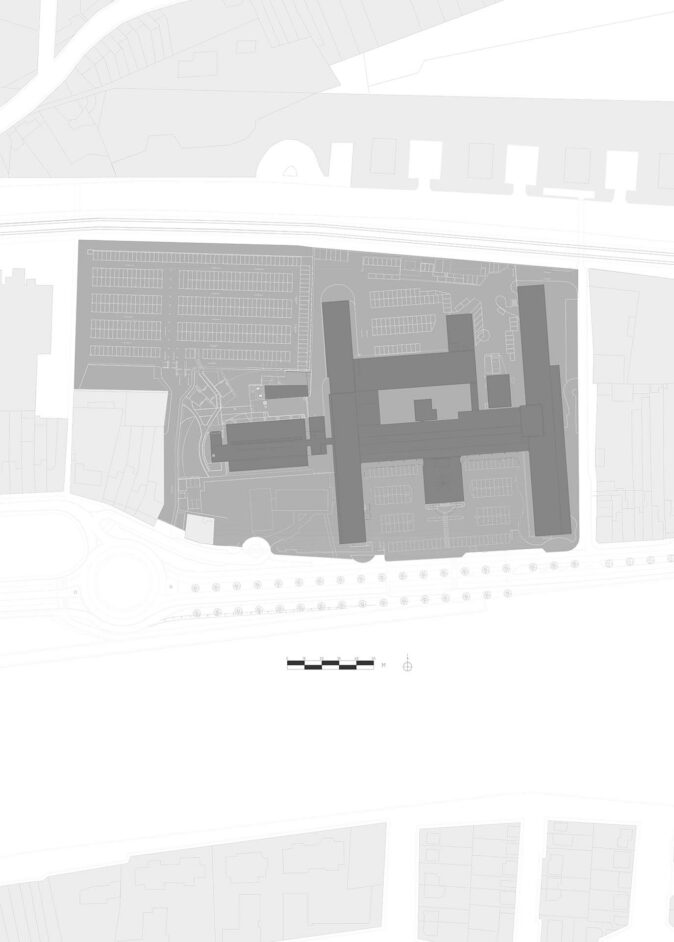
The operating theatre block groups together all the general and outpatient surgery on level +3 of the hospital and is directly linked to the sterilisation department. The conventional operating theatre block is in the new Health Space and consists of 6 “traditional” operating theatres and one hybrid operating theatre. Each of the rooms has been equipped with the latest technology in terms of image digitisation and management.
One of the particular features of this operating theatre is its post-operative monitoring room [SSPI], which is integrated into the operating theatre and not on the periphery of the theatre block. All the staff areas, changing rooms, relaxation rooms, and offices are located one floor above, thus separating the zone from the common areas.
The technical premises have also located been one floor above so as to be directly above the rooms and to enable technical staff to work without having to enter the protected area of the block.
The new day surgery unit is located next to the conventional surgery unit in place of the old unit. It consists of five multi-purpose rooms and one room dedicated to ophthalmic surgery. A new post-operative monitoring room [SSPI] is also integrated into the block but in the immediate vicinity of the transfer area.
In addition to these two blocks, a paediatric operating block is located at the end of the day surgery block. This small block consists of an operating room and a post-operative monitoring room [SSPI], access to which is completely separate from the rest of the operating theatre in order to have a completely dedicated paediatric circuit, with the exception of the support rooms, which have been shared with the ophthalmic surgery sector.
At the junction of the two blocks there is the central sterilisation department, and the area for making up the case carts. Once the case carts have been made up, they are stored in a buffer zone in the operating theatre before being directed to the rooms according to the operating programme.
